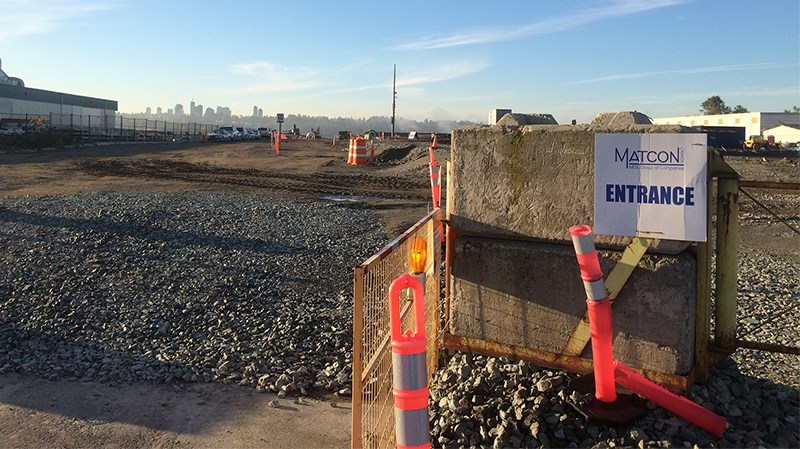Beedie Group will be bringing an updated plan for its massive Fraser Mills redevelopment to council Dec. 1, a company spokesman confirmed Tuesday at a public meeting on Maillardville heritage.
David Roppel said the plans will contain some changes but will maintain heritage details that were part of the original 2008 master plan as well community amenities, including a public pier, a plaza and a waterfront path for pedestrians and cyclists.
Eight years have passed since the master plan and comprehensive development agreement were approved. During that time, the real estate market has changed and the property was used as a staging ground for Port Mann Bridge construction.
Roppel, who is director of residential development at Beedie Living, told a group of heritage enthusiasts the goal of the plan is to connect the "wider community back to the river, which we don't have."
The project build-out will move from west to east, starting with development of industrial land, including a new building for AG Hair that was approved by Coquitlam council recently.
Roppel didn't confirm the number of residential towers and low-rise buildings that will be built over 20 to 25 years but said he expected more than 7,000 people will live there.
Among the changes to the area since the original master plan is School District 43's decision not to build a school nearby; as well, BCIT has said it is no longer interested in the area for a satellite campus.
But Roppel said there will be 16 acres of park, a greenway, with an enhanced Como Creek, cycling infrastructure and possibly indoor community space.
The property owned by the Beedie Group is extensive and includes the Wastech transfer station and the former AirCare testing station site, Roppel said, but a parcel of land immediately south of United Boulevard and east of King Edward is owned by Wesgroup.
According to a report to council, Beedie must submit an application to amend the official community plan and development agreement for Fraser Mills by Dec. 1, commit to no net loss of jobs (approximately 1,500) at Fraser Mills, ensure that its industrial buildings are of a high-quality design, and commit to a high-quality public art component near the corner of King Edward street and United Boulevard.
On Tuesday, a group of heritage advocates heard that the original Fraser Mills site dates back to the turn of the 20th century and at one time provided employment for more than 1,000 people including many francophones and their descendants. The mill was closed in 2001.



